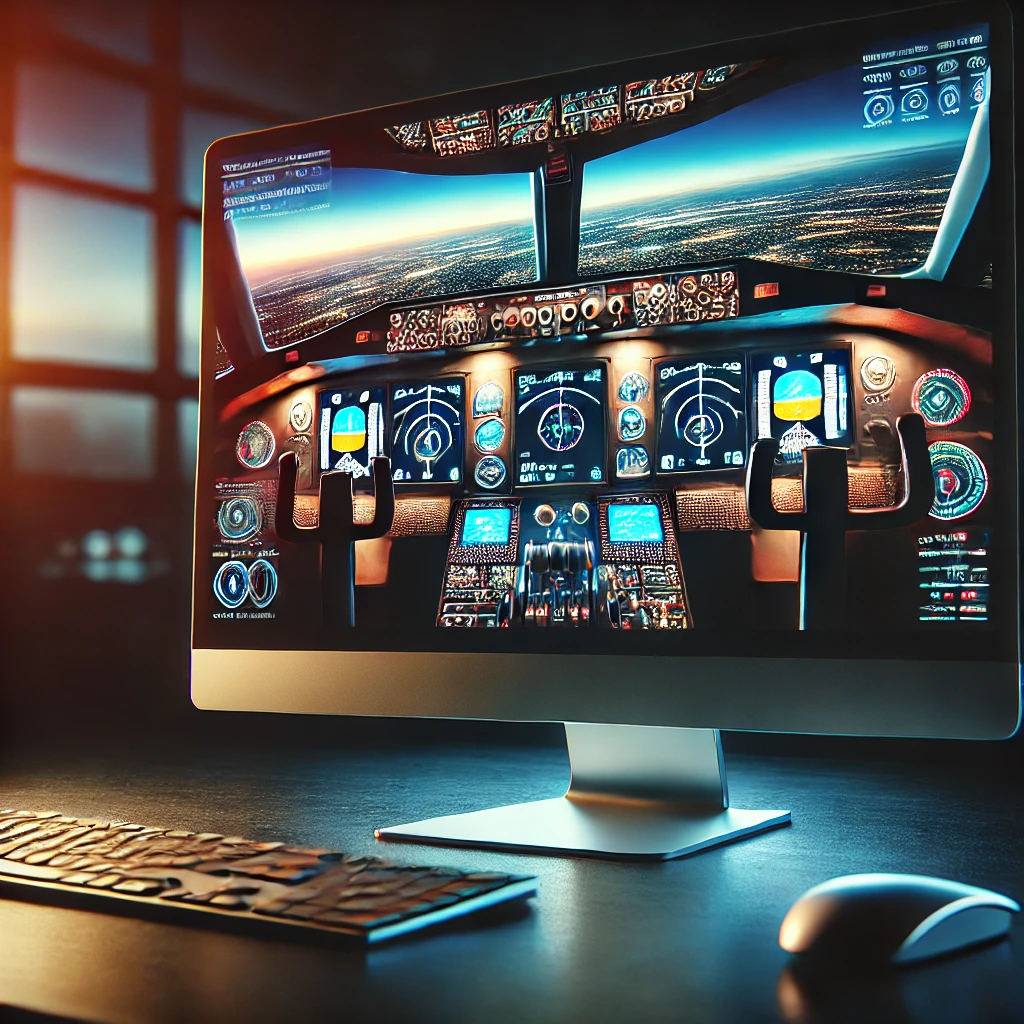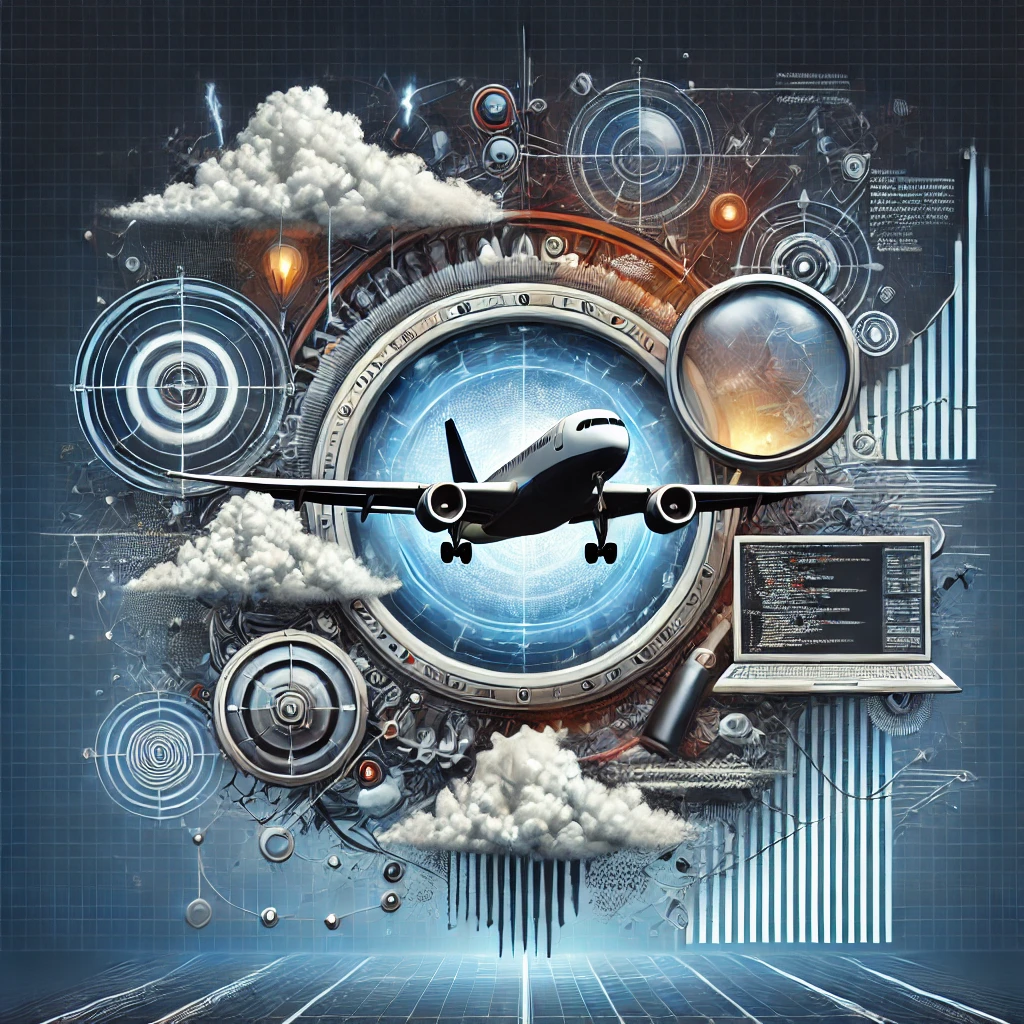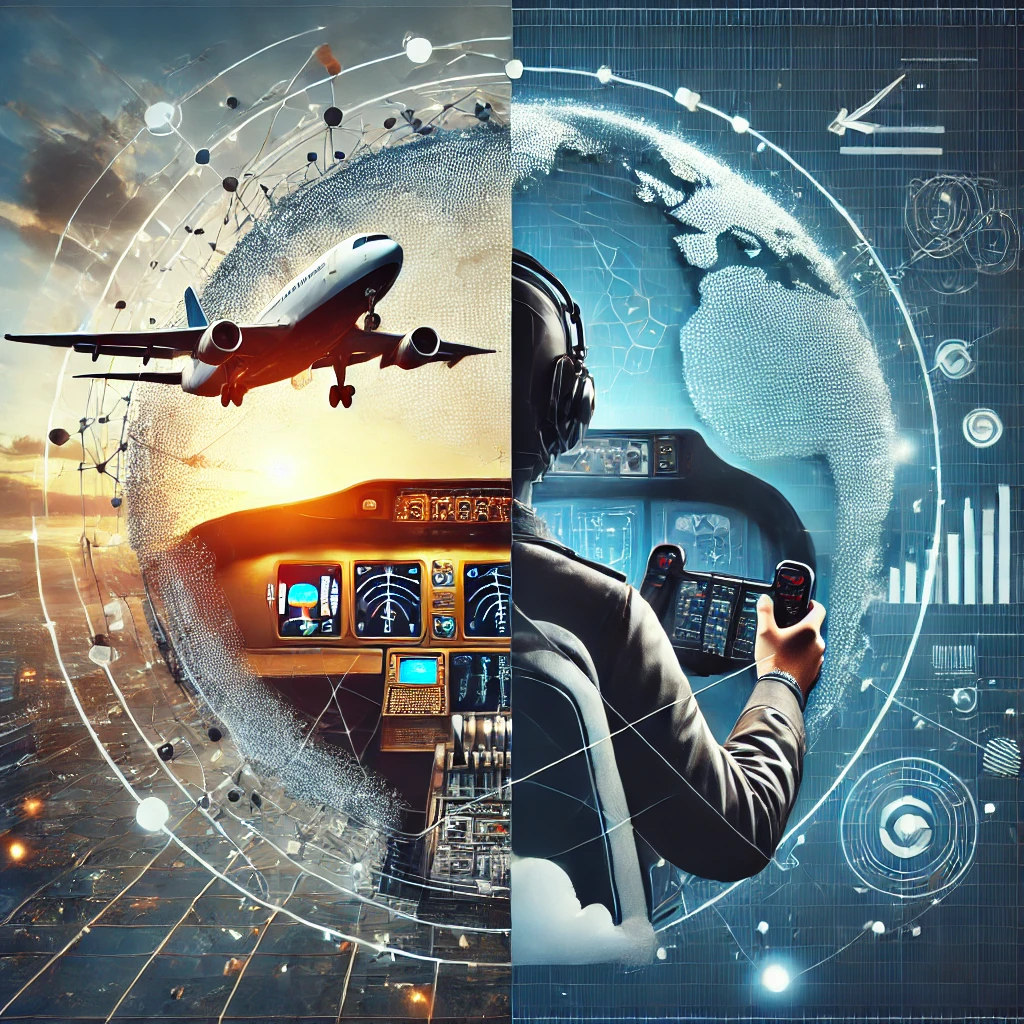What Is The Best Flight Simulator Software – Comparison of Top Models:

Flight simulators have come a long way since their inception. These software tools emulate the experience of flying an aircraft in a virtual environment. Whether you’re aspiring to become a professional pilot or just someone who dreams of soaring above the clouds, flight simulators bring that experience right to your computer screen.
Originally designed for training pilots, flight simulators have expanded beyond professional use. They now cater to hobbyists and gaming enthusiasts. These simulators offer detailed aircraft models, realistic landscapes, and even varying weather conditions to challenge users. The blend of education and entertainment these programs provide is unmatched.
The history of flight simulation takes us back to the early 20th century when mechanical flight training devices were first introduced. With the advent of computers, these evolved into sophisticated software capable of rendering realistic flight dynamics and controls. Microsoft Flight Simulator, one of the pioneering programs, has been around since 1982 and has continuously set benchmarks in the industry.
Why are flight simulators important? For one, they provide a risk-free environment to learn and practice flying skills. Real-world training can be expensive and limited by weather conditions or equipment availability. Flight simulators, on the other hand, offer unlimited hours of practice. They’ve become essential tools not just for pilot training but also for research and development in aviation technology.
Besides the practicality for training, flight simulators are just plain fun. Imagine taking control of a Boeing 747, navigating through a thunderstorm, or landing on a small island airstrip—all from the comfort of your home. It’s an exciting way to experience the thrill of flying without stepping into an actual cockpit.
As we delve into the world of flight simulation software, it’s clear that these programs offer more than just a game. They provide a realistic, immersive experience that has both functional and entertainment value.
Comparative Analysis: Top Flight Simulator Software:

Microsoft Flight Simulator is often hailed as the gold standard in the world of flight simulators. Known for its breathtaking graphics and highly detailed world, it’s a favorite among both beginners and seasoned flyers. The latest version boasts incredible realism, with satellite data and Azure AI to create stunningly accurate landscapes. The diverse range of aircraft and the ability to fly anywhere in the world make this software hard to beat.
X-Plane offers an impressive focus on the physics of flight. Developed by Laminar Research, X-Plane is known for its precise flight dynamics and detailed aircraft models. One of its standout features is the ability to model different flight environments down to the smallest detail. It caters to serious flight enthusiasts and professionals who value realism and customizable options.
Prepar3D, developed by Lockheed Martin, takes a more professional and educational approach. Often used in aviation training institutes, Prepar3D offers a comprehensive suite of tools for serious flight training. The emphasis here is on delivering a real-world flight experience suitable for both individual pilots and commercial aviation entities. Its robust platform supports addons, enhancing the simulator’s capabilities even further.
DCS World stands out for its military aviation simulation. If combat flight is more your style, DCS World is your go-to. It offers highly detailed and historically accurate aircraft, from World War II planes to modern jets. The level of detail and realism extends to the battlefield, making it an exceptional choice for those interested in military aviation and tactics.
Each of these flight simulators brings something unique to the table. Microsoft Flight Simulator excels in visual fidelity and global exploration. X-Plane is all about accurate flight dynamics and detailed customization. Prepar3D focuses on professional training and versatility, while DCS World shines in military simulation. Choosing the right one depends on what you value in a flight simulator.
When selecting a flight simulator, consider your goals. Are you looking for stunning graphics and worldwide exploration? Or perhaps a professional-grade tool for training purposes? Maybe a detailed combat experience? Understanding what you want will help you pick the best software for your needs.
Evaluation Criteria: What Makes the Best Flight Simulator:

Realism and accuracy sit at the top of the list. A good flight simulator must mimic real-life physics, aircraft behavior, and the dynamics of flight. Pay attention to how well the software replicates different flight conditions, including turbulence, takeoffs, landings, and system failures. The closer it feels to real flying, the better.
The variety and quality of aircraft in the simulator also play a crucial role. Look for software that offers a wide range of aircraft, from commercial airliners to small private planes and historical military jets. High-quality models with detailed cockpits and authentic controls enhance the experience.
Geographic coverage and scenery detail are other significant factors. Top-tier simulators use satellite data and advanced graphics to create realistic landscapes. This adds to the immersion, making it feel like you’re genuinely flying over real-world locations. Consider whether you want the option to explore global cities, rural areas, or even remote islands.
A robust user community and support system can greatly enhance your experience. Popular flight simulators tend to have large, active communities with forums, tutorials, and user-generated content. This support can be invaluable, especially for newcomers. It’s also worth noting if the software offers official support channels or regular updates to tackle bugs and improve features.
Compatibility with hardware and peripherals is key for an immersive setup. Ensure the simulator is compatible with a wide range of joysticks, yokes, pedals, and VR headsets. Some users go all out, setting up home cockpits with multiple monitors and flight instruments. Make sure your chosen simulator can handle these setups smoothly.
Performance and system requirements shouldn’t be overlooked. High realism often demands powerful hardware. Check if your computer meets the software’s specifications. Investing in additional RAM or a better graphics card might be worth it to get the best performance.
Real-World Training vs. Flight Simulation: Bridging the Gap:

Flight simulators are revolutionizing pilot training. These tools allow aspiring pilots and professionals to practice without the risks associated with real flying. From mastering basic maneuvers to dealing with complex emergency procedures, simulators provide a safe environment to develop skills.
One big advantage of flight simulators is cost. Real-world training is expensive. Simulators offer unlimited practice time at a fraction of the cost. Pilots can repeat procedures until they’re perfect without worrying about fuel costs or wear and tear on aircraft.
Another benefit is the opportunity to practice in diverse conditions. Want to experience a severe thunderstorm or practice landing in heavy fog? Simulators let you encounter various weather scenarios that might be too dangerous or rare to experience in real life. This exposure helps build confidence and competence.
Simulators also enhance skill retention. Pilots can stay sharp by regularly flying virtual planes even when they’re not on duty. This continuous practice helps maintain proficiency and keeps them prepared for real-world flying. Instructors can use simulators to provide instant feedback and tailor training to individual needs, making the learning process more efficient.
There are limitations, though. No matter how advanced a simulator is, it can’t replicate the exact feel of real flight. The physical sensations, like G-forces, can’t be perfectly mimicked. Also, some simulators might not cover every detail or model every aircraft system perfectly. Therefore, while simulators are fantastic for practice, they should complement, not replace, real-world training.
Several aviation schools and airlines are finding success with integrated training programs. Combining simulator sessions with actual flight time results in a well-rounded training experience. Airlines often use simulators for initial training, recurrent training, and to assess pilots’ responses to scenarios that are hard to recreate in real life.
User Experience: Feedback from Enthusiasts and Professionals:
User feedback paints a vivid picture of what each flight simulator brings to the table. Enthusiasts rave about Microsoft Flight Simulator’s stunning visuals. The ability to fly over realistic landscapes and recognizable cityscapes is a highlight for many. Casual users and serious pilots alike appreciate the sheer detail and graphical fidelity, which make the experience immensely immersive.
X-Plane garners praise for its flight dynamics and versatility. Many pilots and hobbyists recommend it for its realistic flight physics. Some users go so far as to customize their planes and environments, taking advantage of the software’s flexible framework. This customization potential is a big selling point in user reviews, especially for those with specific needs or interests.
Prepar3D receives nods for professional-grade training capabilities. Users appreciate its robust suite of tools designed for educational purposes. Many flight schools and training centers use Prepar3D extensively, and reviews often highlight its effectiveness in real-world training scenarios. The community appreciates the platform’s commitment to simulating real-world aviation challenges.
DCS World holds a special place among military aviation enthusiasts. Players and professionals are impressed by the detailed military aircraft and combat scenarios. The historical accuracy and attention to detail make it a favorite for those interested in military tactics and dogfighting. User feedback often mentions the steep learning curve but notes that it leads to a deeply rewarding experience.
On forums and online communities like Reddit and AVSIM, users share their experiences, tips, and modifications. They often highlight the active support and expansive communities surrounding these simulators. This peer support can be invaluable, providing help and enhancing your simulator experience.
For anyone looking to dive into flight simulation or improve their skills, these user insights offer guidance. Reviews, forums, and community feedback can help you make an informed decision. Exploring these resources might reveal which software aligns best with your goals and preferences.
Future Trends in Flight Simulation Software:

Technological advancements are continuously pushing the boundaries of flight simulation. Virtual Reality (VR) and Augmented Reality (AR) are gaining traction. Imagine donning a VR headset and looking around a fully immersive 360-degree cockpit. This tech isn’t just cool; it’s a game-changer for realism and training efficacy.
Artificial Intelligence (AI) is another trend to watch. AI can enhance flight simulations by creating more realistic air traffic control (ATC) and dynamic environments. Soon, we might see simulators that adapt in real-time to the pilot’s actions, offering a more interactive and challenging experience.
Cloud computing is another frontier. It can provide vast, detailed worlds without the need for top-tier hardware. Streaming high-quality simulations from powerful servers can make these experiences accessible to more users. This could open the door for people unable to afford high-end PCs but still interested in flight simulation.
The software is also becoming more integrated. Developers are working on creating ecosystems where various simulators and tools can communicate seamlessly. This means better interoperability between training programs, tracking software, and even other simulation platforms.
Environmental realism is likely to see significant leaps. With satellite imagery, real-time weather data, and even seasonal changes incorporated into simulations, the virtual world is looking more and more like the real thing. Imagine practicing a landing in a snowstorm that’s happening in real-time at the actual airport!
Industry experts predict that flight simulators will continue to blur the line between virtual and real-life flying. Advancements in sensory feedback might one day mimic G-forces and other physical sensations more accurately. As technology progresses, we can expect these tools to become even more crucial in both training and entertainment.

This is an interesting topic. And it took many years for the pioneering aircraft designers to come up with models that would actually stay in the air. A deep knowledge of physics paid the way. And countless trial and error experiences delivered what we commonly use today in flights. The Wright Brothers contribution is valuable.
Thanks for the feedback and visiting my website.
This may sound dumb but I had always wondered how a plane was able to stay in the air. It just baffled me as to how something so big was able to stay in the air. This article has given me some sort of perspective so thank you for this. I will be sure to share this article with everyone I know
Yes no body knows exactly know how planes stay in the air.
Aircraft engineering is one of the most fascinating for me, only nuclear energy is more fascinating. When you consider home much electronics are there, oil, and fluids, different types of materials, and it must do high pressures and high speeds, it is just phenomenal. I only miss the opportunity to see or fly with Concorde.
Thanks for the great feedback. There is a lot to learn about aircraft engineering.